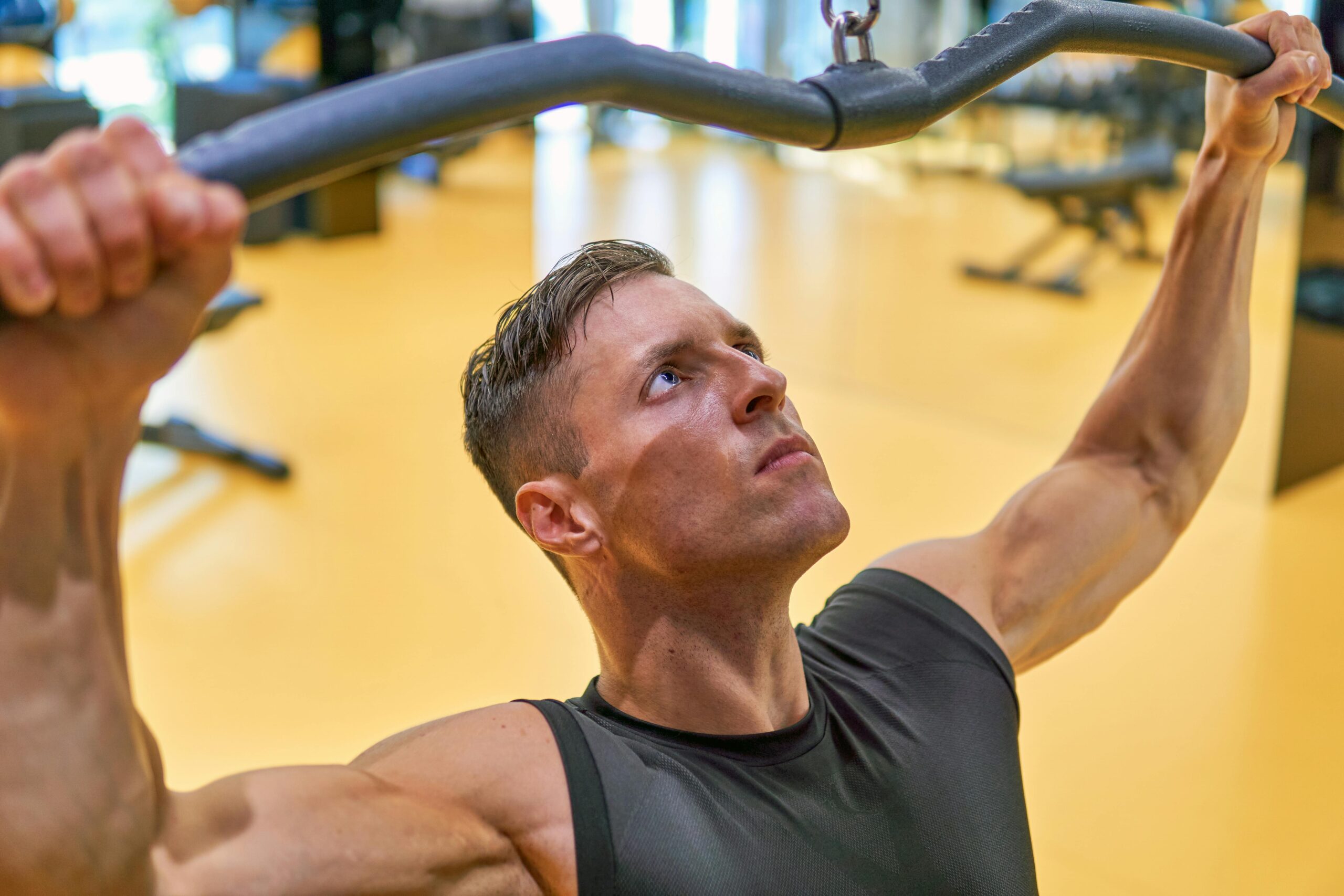Effective Ways to Enhance Your Rückenübung Kabelzug Results in 2025
Understanding the Basics of Rückenübung with Kabelzug
Rückenübungen, particularly using a Kabelzug, are essential in modern fitness routines as they target various muscle groups effectively. These exercises form the foundation for improving overall back strength, posture, and stability, crucial for preventing injuries and enhancing athletic performance. Incorporating Kabelzug in your rückentraining ensures your back muscles, especially the latissimus dorsi and trapezius, receive adequate focus during your workouts.
As we move towards 2025, the significance of targeted workouts using effective training gear both at the gym and at home has never been clearer. This trend not only emphasizes building muscle strength but also highlights the importance of maintaining a healthy back. Understanding the mechanics of these exercises can help tailor your fitness journey towards achieving personal fitness goals while being mindful of proper form and technique.
In this article, we’ll explore various strategies to effectively enhance your Rückenübung results, offering insights into training techniques, nutritional tips, and the latest fitness trends that contribute to overall performance improvement and muscle development. We will also dive into smart ways to incorporate different fitness accessories and tools to elevate your workout regimen.

Essential Techniques for Optimal Training Success
Building on the fundamentals of Rückenübung, it’s imperative to focus on technique to ensure you maximize your results. Proper form influences not only your performance but also the effectiveness of each workout session. Below are essential techniques you should incorporate into your routine:
Focusing on Form and Posture
A key aspect of effective rückentraining is ensuring that your posture is correct. When using the Kabelzug, begin by positioning yourself appropriately with your feet shoulder-width apart and knees slightly bent. Pull the cable towards your chest while keeping your elbows close to your body. This approach minimizes strain on your lower back and fosters better muscle engagement.
Avoid rounding your shoulders; instead, keep them back and relaxed. Engaging your core during the movement further stabilizes your body, ensuring a smooth flow from the start to the finish of each repetition.
It’s also crucial to maintain a slow tempo during the movement. Quickly yanking the cable can lead to muscle strain or injury, leaving you out of action for longer periods. Controlled actions not only prevent injuries but also amplify muscle activation, leading to better growth over time.
Incorporating Variation into Workouts
Preventing workout monotony plays a vital role in progression. Implementing diverse movements using the Kabelzug can keep your body challenged and engaged. Additionally, mixing repetition ranges can stimulate growth in muscle fibers and promote endurance.
For instance, perform low-rep, high-weight sets to build strength, then switch to higher-rep, lower-weight sets focusing on muscle endurance. This variance nurtures overall muscle development and prevents plateaus, which are commonly faced in structured training plans.
Moreover, combining different grip variations (overhand, underhand, neutral) while pulling enhances muscle recruitment, targeting slightly different areas of your Rücken and improving overall results.
Utilizing Fitness Accessories for Enhanced Results
The right fitness accessories can significantly improve your training outcomes. Items such as resistance bands, weight belts, and stability balls can add an extra layer of challenge to your rückentraining. For example, incorporating resistance bands while executing Kabelzug exercises engages your back muscles more intensely.
Stability balls can also be utilized during warm-up or stretching exercises to encourage deeper engagement of stabilizer muscles, enhancing your overall performance during primary lifts and just as important, reducing the risk of injury.
Nutrition’s Role in Achieving Your Fitness Goals
With these basics established, it’s essential to recognize the influence of nutrition on your training success. Developing a holistic approach that merges workout intensity with balanced dietary practices can optimize your results.
Prioritizing Protein Intake
Protein plays a pivotal role in muscle recovery and growth. Post-workout nutrition should include a protein-rich meal or shake to facilitate muscle repair. Incorporating lean proteins such as chicken, fish, or plant-based alternatives can support muscle hypertrophy while also maintaining a healthy weight.
Experts recommend consuming protein within an hour after training to enhance the recovery process. This is essential, particularly after rigorous workouts that involve heavy lifting or high-intensity training sessions.
Tracking your nutrient intake through fitness apps may help maintain adherence to your nutritional goals while allowing flexibility in adjustments as necessary.
Hydration and Recovery
Stay hydrated, especially during intense training sessions. Dehydration can stifle performance and overall results. Drinking adequate water helps maintain energy levels and improves recovery time post-workout.
Implementing hydration strategies can be as simple as drinking water regularly throughout the day and using electrolyte-infused drinks during particularly arduous workouts.
In addition to hydration, incorporating recovery practices such as active stretching and foam rolling can alleviate soreness (or Muskelkater) and enhance blood circulation, promoting faster recovery. These practices alone can lead to improved flexibility and result in a more efficient training regimen.

The Importance of Warm-Up and Cool Down Exercises
Connecting physical preparation with any training session is vital. Understanding the role of warm-up and cool-down processes enhances the body’s efficiency during workouts and contributes positively to long-term health.
Effective Warm-Up Strategies
Start with dynamic warm-up exercises that prepare your body for the specified workout. Movements that increase blood flow and promote flexibility in the muscles you plan to target are ideal. Consider knee hugs, arm circles, and dynamic stretches tailored for the back and core areas.
These activities will improve muscle elasticity and ensure everything from Zugübungen to compound lifts proceeds smoothly, minimizing injury risks.
Importance of Cool Down Routines
Cooling down is not simply a formality; it’s a critical recovery phase. Engaging in light stretching and deep breathing exercises post-workout promotes relaxation and circulation in the muscles, expediting recovery time and helping in the prevention of injuries in future sessions.
Moreover, slowing down your heart rate gradually through structured cool-down routines enables the body to adjust returning to a state of rest efficiently. This habit cultivates mindfulness and helps instill consistency in workouts while achieving fitness goals.
Conclusion: Your Path to Effective Rückenübung Results in 2025
As we look ahead to fitness in 2025, integrating these effective strategies into your Rückenübung progress using Kabelzug can enhance your overall results significantly. Understanding exercise mechanics, diversifying training plans, staying vigilant about nutrition, and prioritizing both warm-up and cool-down routines are all instrumental in reaching your fitness aspirations and overcoming setbacks.
In the end, it’s imperative to listen to your body and adjust as necessary, adhering to progressive training principles that mirthfully foster growth. This is where the involvement of a knowledgeable trainer or community can also play a pivotal role in guiding personalized training plans that resonate with your unique fitness level and aspirations.
Q&A Section: Common Queries Regarding Rückenübung with Kabelzug
How often should I train with the Kabelzug?
It’s recommended to integrate Kabelzug sessions 2-3 times per week into your fitness routine, allowing proper recovery time between training sessions for optimal muscle growth and rehabilitation.
What should I do if I experience discomfort during my workouts?
If discomfort occurs, evaluate your form or decrease the weight you are lifting. If pain persists, it’s advisable to consult a professional or trainer to ensure you are performing exercises safely and effectively.
Can I combine Rückentraining with other muscle group workouts?
Yes, combining Rückentraining with other muscle groups is beneficial; it creates a balanced workout regime. Be cautious to include varied exercises that do not overly strain your muscles.
